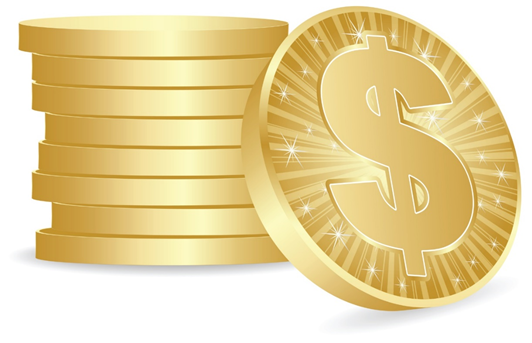What is the USD coin?
USD Coin is a stablecoin pegged to the US dollar, which was launched under the collaboration of Coinbase and Circle on 26 September 2018. The cryptocurrencies that are similar to USDC are TrueUSD and Tether, as they are also pegged to the US dollar.
Chiefly, USD coins extend service to convert the US dollars in tokens and circulate the US dollar over the blockchains and internet. Moreover, USDC can be converted into the US dollar. The whole process of issue and redemption is undertaken by the ERC-20 smart contracts.
USDC has brought USD into the world of cryptocurrencies that can be moved to any part of the world in no time along with bringing stability in the cryptocurrency market that has been missing for quite a long time. New opportunities for hedging, lending, borrowing, trading to name a few have opened up.
Summary
- USD Coin is a stablecoin that is pegged to the US dollar.
- USD coins extend service to convert the US dollars in tokens and circulate the US dollar over the blockchains and internet.
- USDC has brought USD into the world cryptocurrencies that can be moved to any part of the world in no time.
Frequently Asked Questions (FAQs)
What is the working of USDC?
Ethereum is a programmable blockchain that is used by developers for the creation of new tokens and applications. Like many other cryptocurrencies, USDC also runs on the Ethereum blockchain.
The purpose of introducing USDC was to create digital money that is not affected by the volatility significantly in the middle of a transaction. The currency is backed by the assets whose dollar value is equal to the value of USDC in circulation. The assets are stored by the US financial institutions in segregated accounts.
The USDC can be accessed by the cryptocurrency exchanges like Coinbase. The tokens can be stored in those wallets that are compatible with Ethereum. No transaction fee is charged for converting US dollars into USDC.
USDC can be interpreted as the programmable dollar. Since it is programmable, a whole new pool of opportunities opens up in the context of business and applications. The lending process is fast and cheap, the process of storing tokens is easy, more transparent, allows global crowdfunding along with no time in making payments, and higher stability in the value.
Moreover, since the USDC runs on Ethereum, it can take advantage of the DeFi applications on Ethereum. A higher yield can be generated by the USDC holders by lending their holdings on DeFi. USDC also provides rewards on the tokens held in Coinbase.
When compared to the wire transfer, making payment via USDC, there is a huge difference in terms of cost and speed.

Image source: © Marincas_andrei | Megapixl.com
How to trade with USD coins?
One USD coin is equal to one US dollar on the blockchain technology of Ethereum. All the apps that support Ethereum and ERC-20, support USDC cryptocurrency.
The first step for gaining access to USDC is to register with the exchange and complete the KYC (Know your customer), and lastly link the exchange with the user’s bank account.
On the Circle USD, four core actions can be undertaken by a user, namely, tokenize USD (converting US dollar into USDC), redeeming USD (converting USDC into USD), transferring the currency and depositing the currency in external wallets.
All standard fees are applicable on entering into any trade of USDC on the Coinbase platform. On Circle USDC, only $500 are charged in case of rejected or incorrect bank transfer.
A minimum of 100 USDC can be redeemed. The process of redemption can take up to 24 hours and generally the transactions are processed on the business day. However, there is no limit to converting USD into USDC, which is known as tokenisation, and it might take 2 working days for completing the transaction.
What benefits are extended by USDC like any other stablecoins?
- Cryptocurrency can be sold without making any payment and also the process of buying cryptocurrencies is also easy.
- Traditional financial institutions and instruments can be avoided.
- Hyperinflation can be avoided.
- The money can be sent across the globe at a low cost.
- USDC and other stablecoins can be used for making a purchase at exchanges, blockchain-based games and dApps.
What differentiates USDC from other stablecoins?
Stablecoins can be divided into four categories:
Fiat collateralised – This category of stablecoins is pegged to a reserved fiat value and they are centralized by design. Tether, USD coins, Digix Gold, Paxos Standard Token, Gemini Dollar and TrueUSD are some examples of fiat-collateralised cryptocurrencies.
Crypto-collateralised – This category of stablecoins is pegged to crypto assets. For instance, Havven and maker coins.
Algorithm non-collateralised – These stablecoins aim at providing stability without employing any collateralised assets. For instance, Fragments, Kowala and Basis.
Hybrid – Any combination of the above-mentioned stablecoins is categorised as a hybrid. For instance, Carbon.
USD coins are fiat- These are collateralised stablecoins. All the cryptocurrencies that fall into this category of stablecoins, generally work in a similar fashion with a minor difference. The majority of the stablecoins are pegged by the US dollars, the minor difference can be because of the difference in the fee policy and partner organisations.
 Please wait processing your request...
Please wait processing your request...